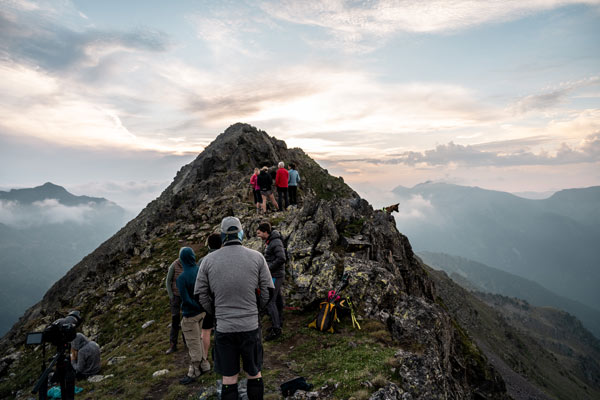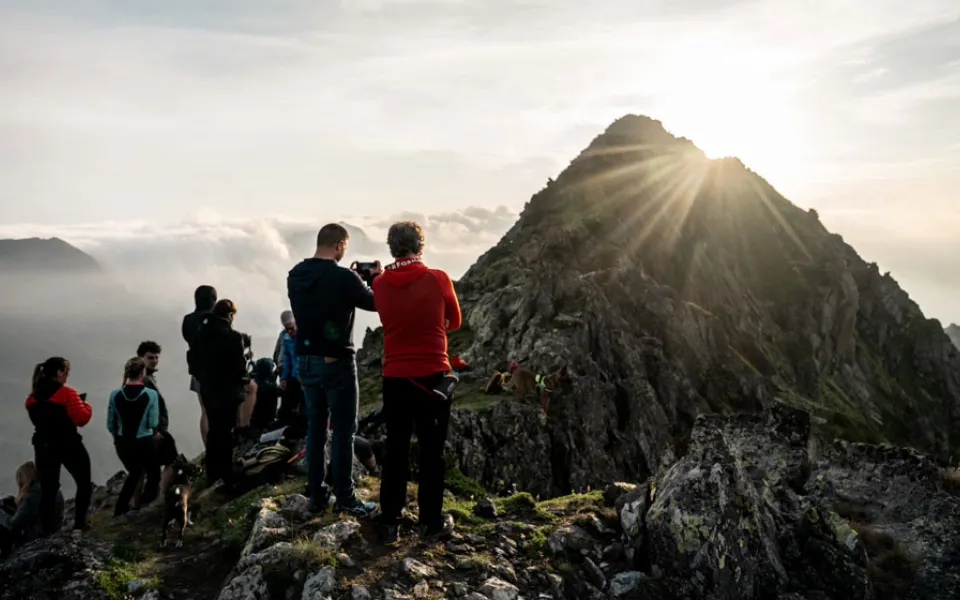
Hiking is one of the most popular summer activities in Andorra, and it’s no surprise as to why. With the Pyrenean microstate boasting some of the most spectacular landscapes in Europe, and with peak after peak climbing towards the sky, hiking in Andorra is a splendid way to spend a day.
Before setting off, though, you need to understand what to wear for mountain hiking, because the key to a successful hike lies in wearing the right gear. Choosing the appropriate clothing can enhance comfort, improve performance and, most importantly, ensure safety during your adventure.
In this guide to what to wear for hiking, we’ll break down all you need to know about clothes for hiking, both for summer hikes and winter hikes.
Clothes for hiking
Let’s start off by listing the main clothes for hiking and we’ll do so by going through a few different categories:
- The upper base layer of clothes for hiking: With the upper base layer, which means the top you’ll wear closest to your skin, you’ll want something comfortable but which is lightweight and can draw sweat away. Cotton should be avoided here, as it holds moisture and dries slowly.
- The upper outer layer of clothes for hiking: As for what to wear on top of your upper base layer, you might want a fleece to provide insulation but you should also make sure that the final layer is able to be exposed to the elements.
- The bottom layer of clothes for hiking: When it comes to the bottom later, keep in mind that your legs are the engine room of any hike and that you’ll either want a stretchy material or shorts, to help you move freely. Avoiding heavy fabrics, such as jeans, is also advised, since they take much longer to dry and will wear you down. No type of bottom later clothing for hiking will dry faster than your own skin.
- The footwear for hiking: Making sure you have the proper footwear is just as essential as any clothes for hiking. Hiking boots are the ultimate option, but you can also get away with other types of outdoor shoes so long as they provide the necessary ankle support. Your shoes also need to be waterproof, as there’s nothing worse than getting wet socks early on in your hike.
What to wear for hiking in summer
When it comes to the question of what to wear for hiking in summer, it’s true that there are some nuances to consider in addition to the general guidance outlined above. The heat of summer amplifies the importance of lightweight fabrics, while you’ll also want to ensure you have sun protection in the form of sunscreen and maybe even a hat.
What to wear for mountain hiking
An important piece of advice to consider when considering what to wear for mountain hiking is that climbs in higher altitudes can experience rapidly fluctuating temperatures. So, what does that mean for your clothes for hiking? Well, it means layering is extra important and that you should try to make sure you always have the ability to add or subtract a layer the further along you go, depending on the conditions.
Hikes deep into mountain terrain also bring slightly more risk, so ensure you’re packing first-aid kit essentials and plenty of water and food too.
What to wear for hiking in winter
What about winter hikes, which are also among the most popular Andorra winter activities? Well, the cold temperatures of winter mean you’ll need additional layers of insulation and the higher chance of precipitation means you’ll need an extra reliable waterproof outer layer. Furthermore, you may need to adjust what to wear for hiking in winter in terms of your footwear, and crampons might even be needed if crossing snowy or icy terrain.
Winter hikes usually also require additional accessories, such as gloves, a hat and a neck gaiter or scarf. Hand warmers are also an option if you think your hands could get too cold out there in the wintery conditions.
All in all, you can never be too prepared in terms of what to wear for hiking. Your clothes for hiking will always be partly about comfort and partly about safety and it’s important to properly consider both aspects long before you set off for your fun day out.
